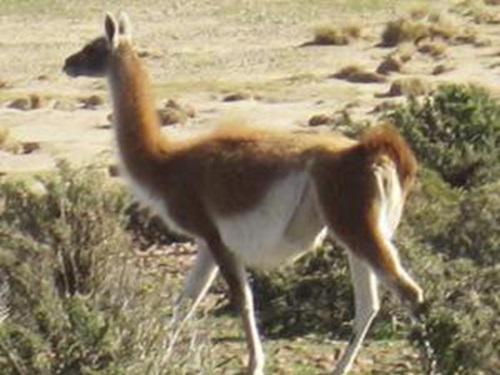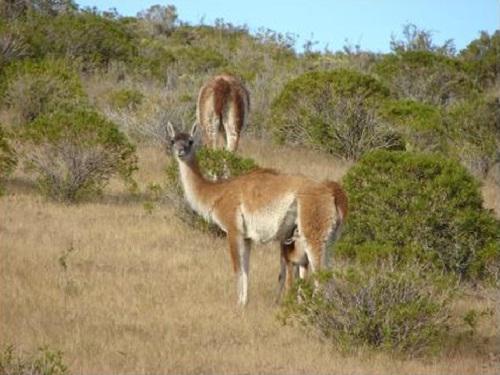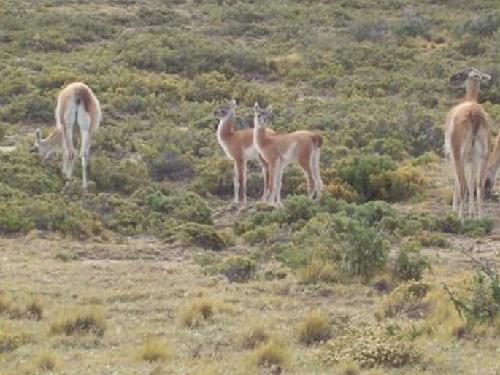Andrea Marino
Other projects
6 Jan 2011
Environmental Variability and Population Regulation in Guanaco Populations from Patagonia
The aim of this project is to address guanaco behavioural plasticity and the ecological factors that could limit anti-predatory responses, in order to manage guanaco populations threatened by high puma predation rates.

Pregnant female at C2BPR. © Alejo Irigoyen.
Guanacos are the dominant large herbivores of South American grasslands, playing a fundamental role in ecosystem structure and functioning, therefore they are critical as an umbrella species for conservation efforts. However, their populations have been drastically reduced and fragmented during the last century. Inter-specific competition with sheep, hunting and land degradation were identified as major factors in the decline in guanaco numbers, currently representing only 2-9% of the original population. On the other hand, pumas have recently re-colonized much of their former range, exploiting the abundant supply of introduced prey. Recent data on puma feeding habits suggest that predation could be preventing the recovery of guanaco populations at some sites, even after the removal of sheep and the relief from inter-specific competition. Thus, puma predation is an additional threat to be addressed if we aim to recover guanaco populations as a key component of conservation plans for the Patagonian steppe.

Mother and chulengo. © Florence Siri.
Individual behaviour, social organization and habitat structure are major factors determining prey vulnerability to predation. Also, parasite load and nutritional status directly affect individual behaviour and are often linked to predation outcomes. For other herbivores, it is known that after the release from predation pressure, some behavioural patterns may persist while others disappear, and their phenotypic plasticity varies among species. In fact, relaxed predation pressure after predator eradication can result in the loss of anti-predatory behaviour, increasing prey vulnerability to possible carnivore re-colonization. However, there is no information about these processes within guanaco-puma systems. The aim of this project is to address guanaco behavioural plasticity as well as to identify the ecological factors that could limit anti-predatory responses, increasing guanaco vulnerability to puma predation.

Chulengos. © Marcela Nabte.
The main activities planned to carry out this project include field surveys to compare guanaco abundance and social structure across 5 protected sites with contrasting levels of puma densities, accounting for habitat characteristics at different scales; behavioural observations; analysis of faecal pellets to compare guanaco parasite load in contrasting scenarios; and field surveys to evaluate the body condition, sex and age categories of the individual guanacos killed by pumas. This study will provide valuable information to understand guanaco anti-predatory strategies, crucial to manage populations threatened by high predation rates, and to propose alternative actions when predator control is not viable. Furthermore, our results will be useful to plan eventual guanaco reintroductions where pumas are abundant.